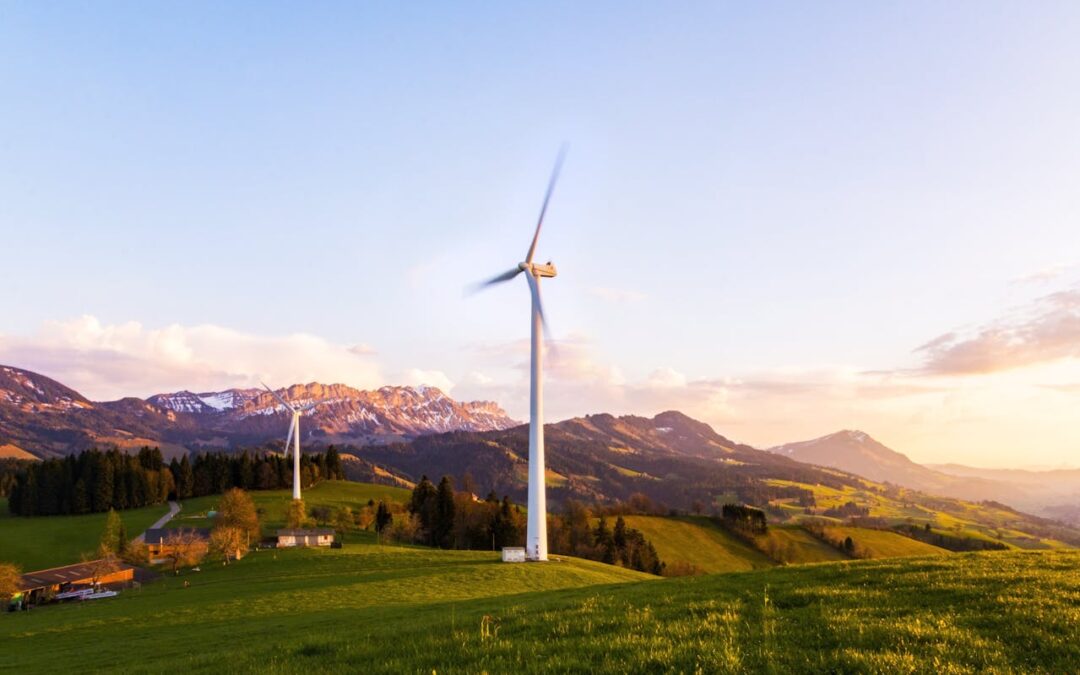Wind energy is one of the fastest-growing sources of renewable energy globally, offering a cleaner alternative to fossil fuels and playing a crucial role in combating climate change. As the demand for wind energy continues to rise, the need for precise wind resource monitoring becomes increasingly important. This technology helps optimize wind energy production, ensuring that projects are not only efficient but also economically viable. In this blog, we’ll explore why wind resource monitoring is essential, the technology behind it, and how it can contribute to the development of sustainable energy solutions.
What is Wind Resource Monitoring?
Wind resource monitoring involves the collection and analysis of data related to wind conditions in a specific area. This data typically includes parameters like wind speed, wind direction, air pressure, and temperature, all of which play a role in determining the potential of a site for wind energy generation. By understanding these factors, developers can make informed decisions on where to install wind turbines, how to design wind farms, and how to optimize their energy production.
Why is Wind Resource Monitoring Important?
- Optimal Site Selection
One of the most critical decisions in wind energy projects is choosing the right location. Wind resource monitoring helps determine the average wind speeds and consistency over time. Areas with high and consistent wind speeds are ideal for wind farms, ensuring that the turbines will generate enough power to justify the investment. Without accurate monitoring, projects could be placed in areas with insufficient wind resources, leading to reduced efficiency and financial loss. - Performance Prediction
By collecting long-term wind data, developers can create detailed performance models for wind farms. This data-driven approach allows for better predictions of how much energy a wind farm will produce, helping stakeholders assess the project’s financial viability and return on investment. Accurate data also allows for efficient turbine selection and configuration. - Reducing Risks and Costs
Wind resource monitoring reduces uncertainty and helps avoid costly mistakes. By accurately forecasting wind conditions, developers can avoid underperforming projects, reducing the risk of investing in a wind farm that does not meet energy production expectations. Furthermore, precise data enables better planning of maintenance schedules, ensuring that turbines operate at optimal efficiency and reducing downtime. - Climate Change and Sustainability
As the world shifts towards cleaner energy sources, the role of wind power cannot be overstated. Wind resource monitoring is integral to this transition, as it helps optimize the use of wind energy, reduce reliance on non-renewable resources, and mitigate the impacts of climate change. With better data, wind energy projects can achieve higher efficiency, lower costs, and contribute more significantly to global sustainability goals.
How Does Wind Resource Monitoring Work?
Wind resource monitoring relies on a variety of technologies and instruments that collect data at different heights and locations within a wind farm site. The primary tools used include:
- Anemometers: These instruments measure wind speed and direction. They are typically placed at multiple locations across a potential site to capture a comprehensive picture of wind conditions.
- LIDAR (Light Detection and Ranging): This technology uses laser beams to measure wind speeds at various altitudes. LIDAR provides detailed data on wind patterns and can help monitor wind conditions over a large area.
- SODAR (Sonic Detection and Ranging): Similar to LIDAR, SODAR uses sound waves to measure wind speeds at different heights. It is particularly useful in areas where LIDAR may be impractical.
- Weather Stations: These collect data on other meteorological conditions such as temperature, air pressure, and humidity, which can also influence wind patterns.
Data from these instruments is then analyzed using sophisticated software that can model wind behavior, predict future trends, and simulate energy production. The result is a robust understanding of a site’s wind potential, helping developers make the best decisions for wind turbine installations.
The Future of Wind Resource Monitoring
As the wind energy industry continues to evolve, so do the tools and techniques used for wind resource monitoring. Advancements in sensor technology, data analytics, and artificial intelligence are making it possible to collect more precise data from more remote and difficult-to-reach locations. Drones and remote sensing tools are increasingly used to monitor hard-to-reach areas, while AI-driven models are improving the accuracy of wind predictions.
These innovations will continue to enhance the efficiency of wind energy projects, reduce costs, and help meet the growing demand for renewable energy worldwide.
Conclusion
Wind resource monitoring is a vital component of successful and sustainable wind energy development. By providing accurate, real-time data on wind conditions, it allows developers to make better decisions, reduce risks, and maximize the potential of wind energy projects. As technology continues to improve, wind resource monitoring will play an even more crucial role in the transition to a cleaner, more sustainable future.
At Rational Technologies Pvt. Ltd. (RTPL), we specialize in providing state-of-the-art wind resource monitoring solutions that enable businesses and governments to harness the full potential of wind energy. Whether you are planning a new wind farm or optimizing an existing one, our advanced monitoring systems can provide the insights you need to succeed. Reach out to us today to learn more about how we can help you achieve your renewable energy goals.

